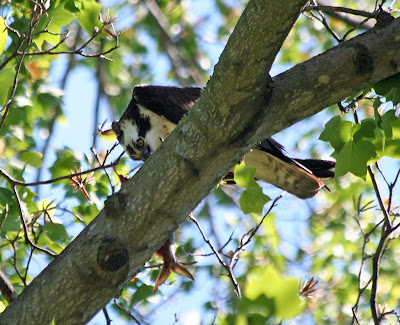(I was supposed to post this on MY OTHER blog...but got mixed up and am too lazy to move all the html code...so here it is!)
This is Hemaris thysbe (at least I think that is what is is) commonly known as the Hummingbird moth. Got these photos while he was hanging out at the dianthus pot on the back of my deck. They turned out nicely, so, of course, I had to share even if in reduced pixel size!
There is not much known about this moth, except one site said the scientific name was based on the Pyramus and Thisbe love story where Pyramus finds Thisbe's blood stained scarf assuming she had been killed and thus impales himself with his own sword. The Hemaris part is based on "Haemorrhagia as a reference to blood-like coloration"
I also found this quote "The courtship behavior of hawk moths is very complex. It often involes pheromones, love songs and aerobatic flights. This type of behavior has been noted in the cream-lined hawk moth from Asia, and is currently being studied in the North American species. However, many different hawk moths, such as the ocellate hawk moth, also found in Asia, do not have these behaviors. Rather, they tend to have broader wings and fly more clumsily. They have no tongues, do not feed as adults, and show little courtship behaviour. (Kitching, 1999)" This is Hemaris thysbe (at least I think that is what is is) commonly known as the Hummingbird moth. Got these photos while he was hanging out at the dianthus pot on the back of my deck. They turned out nicely, so, of course, I had to share even if in reduced pixel size!
There is not much known about this moth, except one site said the scientific name was based on the Pyramus and Thisbe love story where Pyramus finds Thisbe's blood stained scarf assuming she had been killed and thus impales himself with his own sword. The Hemaris part is based on "Haemorrhagia as a reference to blood-like coloration"
I see this often in the summer and sometimes people think they are a stinging insect because of their size...not so.






























